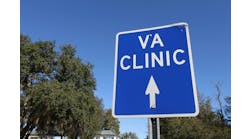At Legacy Health in Portland, Ore., if a clinician has a question about the Epic EHR, he or she can call Legacy’s EHR support center, where one of five registered nurses searches the health system’s IT service management knowledge management repository and responds immediately.
“Their job is to answer the how-to question rapidly and get the clinician back to working with their patient,” explained Janine Jacobs, director of informatics education and user services. “We do about 800 calls per week. Their average time to answer is 30 seconds. In a system with eight hospitals and more than 100 clinics, the knowledge management is crucial because there are so many workflows — GI workflow vs. neurology vs. orthopedic. We have developed a solid knowledge management program in Cherwell, our IT service management [ITSM] platform.” If a physician calls and explains she is doing a lumbar puncture and needs help with the EHR templates, for example, the RN can easily find the information and get the answer to her.
But things didn’t always run so smoothly for IT support services at Legacy. A few years ago, the support team leaders noticed that calls for support were declining. You might think that was because people didn’t have anything to complain about, but the Legacy team could see outages and other issues occurring in the system; it was just that employees weren’t trusting the customer response team to help them quickly and efficiently, said Stephen Schmidt, Legacy’s senior consultant in IS training and staff development. What they found was that if an internal customer had a problem and was not satisfied going through the normal way to request help, they would do an end-run around it. “They would say things like, ‘I remember Roger was a great analyst when we did an EHR upgrade, so I am going to go talk to Roger,’” Jacobs said.
To standardize and improve support, toward the end of 2017 Legacy chose to deploy a new ITSM platform from Cherwell Software and create a knowledge management library, an IT service catalog and a governance structure to oversee incident response, change management and asset management. Legacy also is considering using Cherwell as a vendor management platform to keep a handle on all its cloud service providers.
Why was creating a governance structure important? “We have so many processes, functions and operations, yet we didn’t have a solid incident management process or knowledge management processes,” Jacobs explained. “I would ask 50 people how they define an incident, and each one would have a different definition. Whether you like it or not, that leaks down to the customer.”
Some organizations make the mistake of buying technology and then figuring out their processes. “We decided we wanted to have the processes in place upfront, so we created a governance structure that includes having a process owner and a subcommittee overseeing incident service request management,” she said.
The committee on change management has champions representing everybody across information services and clinical informatics divisions. When an enhancement or optimization request comes in, the committee determines whether this is an enhancement they want to do, or perhaps it might be in the next upgrade from the EHR vendor.
“The governance allows for more ownership within the system itself and the processes for each team,” Schmidt said. “What we found when we brought in a governance structure for each process is that we had less siloing. It made for a better standardized customer experience. No matter what they are asking for from whatever team in IT, they will have the same experience and go through the same steps.”
Schmidt said the new ITSM platform had the added benefit of serving as a nice communication platform between the different cultures of clinicians and IT service desk employees. “It really has become that communication tool between two very different worlds,” he adds. “Our old platform and others like it are always referred to as ticketing systems. If you asked employees what they did today, they would say ‘I closed these 10 tickets.’ It is more than that now. It really has become a communication bridge between the clinical and the technical realms. That has helped.”
The IT team can see that service desk utilization has gradually increased over the past year. “Our customers are no longer going through the back door,” Schmidt said.


